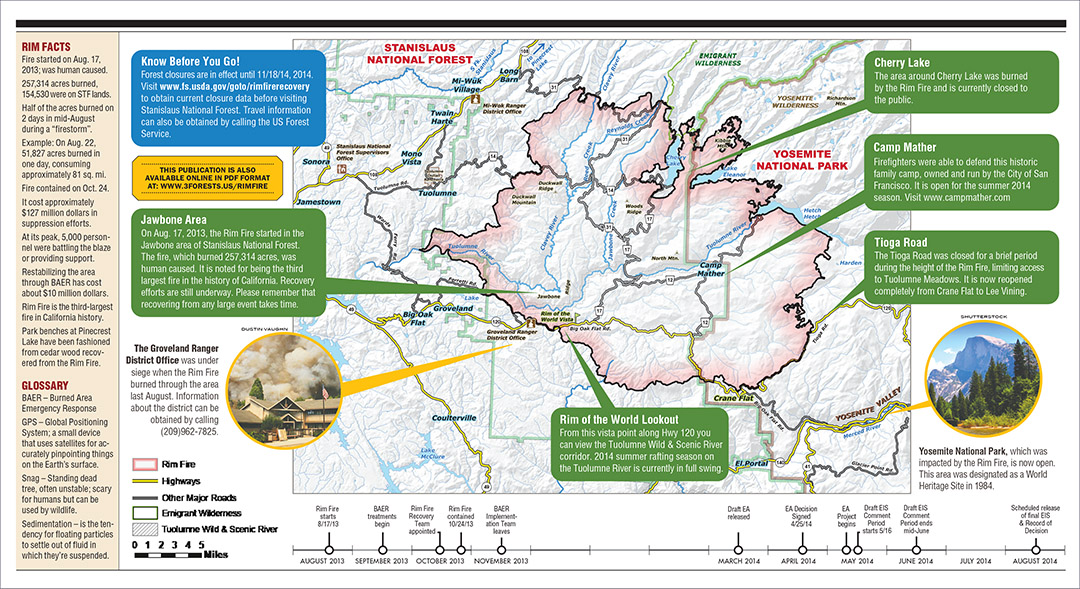 The 2013 rim fire was the third-largest wildfire in California history, burning over 400 square miles of the Stanislaus National Forest. The fire had an enormous effect on plants, wildlife, and all of the people who live and work in its proximity.
The 2013 rim fire was the third-largest wildfire in California history, burning over 400 square miles of the Stanislaus National Forest. The fire had an enormous effect on plants, wildlife, and all of the people who live and work in its proximity.
Visitors and residents of the area near the fire had questions; What led to the fire? What areas were closed to the public? Who was handling the recovery effort and what did it entail? Was there salvageable timber? How can communities protect themselves? Managing and distributing good information to the public was critical in the aftermath of the fire.
Telling the Story
To address this issue, the Forest Service and 3FIA created three Rim Fire Recovery Update print and online publications for forest visitors and local residents to provide information regarding the fire and its recovery. Articles included detailed maps with information on closed areas, changes to affected hunting areas, recovery partnership efforts, and volunteer opportunities. The publication also included a timeline that provided key dates for the recovery process and for public input regarding the Environmental Impact Statement, as well as information on the natural processes at work in the forest during and after a fire.
Many wondered if and how the Rim Fire affected their favorite recreation areas. Several popular campgrounds and day-use areas were closed last year due to fire damage and lack of water resources. Getting this information out to those who needed it saved hours of frustration and helped travelers and hunters to plan accordingly.
Local residents obtained information on how communities near the forest perimeter could stay safe and be better prepared for future fire events by creating more fire-resilient landscapes and fire-adapted properties and neighborhoods. Online versions of these articles are posted on our website at www.3forests.us/rimfire.
Visitors to the Stanislaus, Sierra, and Sequoia National Forests are all seeing the effects of drought and climate change in California. Dead trees are clearly visible on nearly all evergreen forests of the Sierra Nevada. Weakened trees fall victim to burrowing bark beetles and create fuel for new wildfire. Fire is a natural part of the forests, but megafires of this magnitude are a new phenomena.
Providing the public with accurate information on fire prevention and how to experience the outdoors responsibly are an important part of our mission at Three Forests Interpretive Association.



